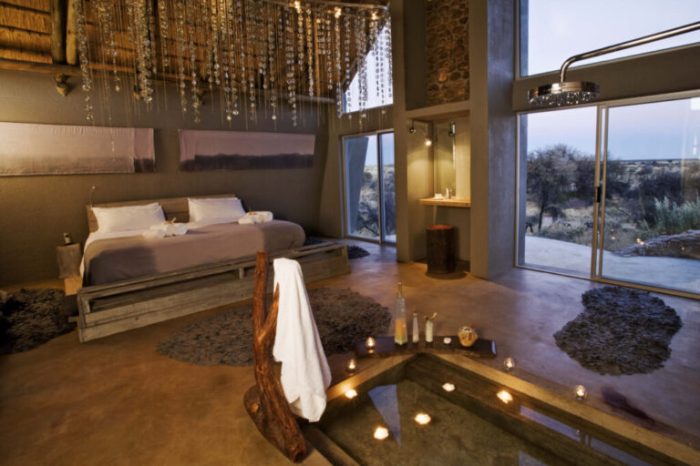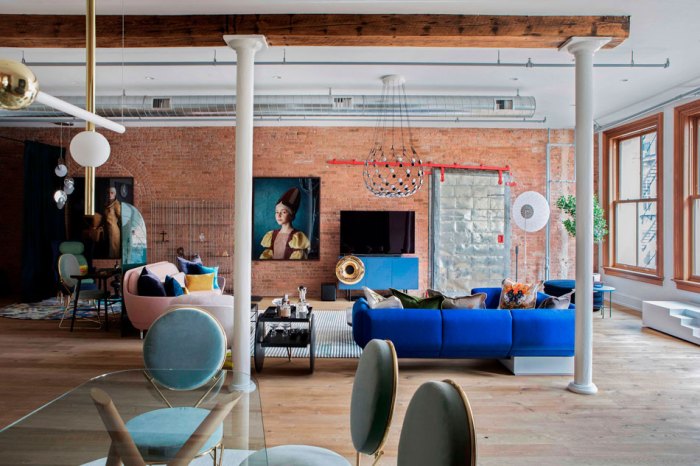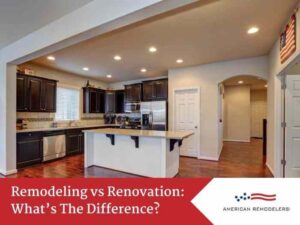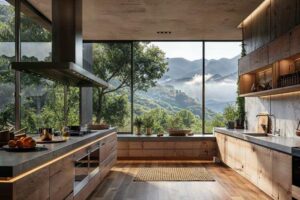
Multifunctional room layouts are redefining how we think about space in modern homes. These innovative designs allow for seamless transitions between various activities, making even the smallest areas feel expansive and efficient. By incorporating elements that serve multiple purposes, homeowners can maximize their living areas while maintaining style and comfort.
From cozy living rooms that double as offices to kitchens designed for cooking and entertaining, the possibilities are endless. This guide will delve into the various types of multifunctional layouts and provide practical tips for optimizing every inch of your space.
Multifunctional Room Layouts
In contemporary home design, multifunctional room layouts have emerged as a vital strategy for maximizing space and utility. As urban living spaces become more compact, homeowners increasingly seek versatile designs that allow rooms to serve multiple purposes without sacrificing comfort or style.Multifunctional room layouts are characterized by their ability to adapt to various needs, making them perfect for modern living.
These layouts can transform a single space into an office, guest room, play area, or entertainment zone, all depending on the time of day or the specific need at hand. The flexibility offered by such designs not only enhances functionality but also promotes a more efficient use of space.
Types of Multifunctional Room Layouts
Understanding the various types of multifunctional room layouts can help in choosing the right design to fit individual needs. Here are several popular layouts that effectively serve multiple purposes:
- Living Room/Office Hybrid: A blend of a cozy living area with a dedicated workspace allows for productivity without sacrificing relaxation. Features like foldable desks or built-in storage maintain the aesthetic while providing functionality.
- Guest Room/Exercise Area: Incorporating a murphy bed or a convertible sofa into a room enables it to transition from a guest sleeping area to a workout zone. This layout is ideal for those who prioritize fitness but also wish to accommodate visitors.
- Dining Room/Entertainment Space: Multi-use dining areas can double as entertainment spaces using expandable tables and collapsible seating. This layout is perfect for hosting gatherings while keeping a casual dining feel.
- Kitchen/Dining Combo: An open-plan kitchen that flows into a dining space creates an inviting atmosphere for cooking and socializing. Utilizing an island as a dining surface optimizes space while enhancing functionality.
Optimizing Space in Small Multifunctional Rooms
Maximizing space in small multifunctional rooms is essential for creating an environment that feels spacious and uncluttered. Here are some strategies to effectively utilize limited space:Begin with a functional layout by strategically planning furniture placement to enhance flow and accessibility. It’s crucial to select pieces that serve multiple functions while remaining stylish.
- Incorporate Storage Solutions: Use ottomans with hidden compartments, wall-mounted shelves, or under-bed storage to keep items organized. Effective storage solutions free up valuable floor space.
- Choose Dual-Purpose Furniture: Invest in furniture that can serve more than one purpose, like a coffee table that can be raised for dining or a sofa bed for accommodating guests.
- Utilize Vertical Space: Installing tall bookshelves or hanging organizers utilizes upward space efficiently, drawing the eye up and creating an illusion of height.
- Choose Light Colors and Mirrors: Light color palettes and strategically placed mirrors can make a room feel larger and more open, providing an airy ambiance that enhances the multifunctional aspect.
“A well-designed multifunctional room does not only optimize space but also enhances the overall living experience by blending form and function seamlessly.”
By embracing these types of layouts and optimization strategies, homeowners can create flexible spaces that meet their diverse needs while maintaining a stylish and cohesive environment.
Interior Design and Decorating
The art of interior design plays a crucial role in creating multifunctional spaces that are not only aesthetically pleasing but also highly functional. Understanding the principles of interior design can significantly enhance how a room serves various purposes, ensuring that it is adaptable to the needs of its users while maintaining comfort and style.To effectively design multifunctional spaces, several key principles must be considered.
These principles focus on maximizing space, creating a cohesive design, and ensuring that each area can serve multiple functions without compromising on style. For instance, using flexible layouts that allow for easy rearrangement of furniture and decor can create a dynamic environment where spaces can be transformed according to need.
Principles of Interior Design for Multifunctional Spaces
A well-designed multifunctional room should incorporate several principles that heighten its usability and visual appeal. These include:
- Space Planning: Careful arrangement of furniture is essential to enhance flow and functionality. Ensure that movement between areas is unobstructed and that each section of the room is easily accessible.
- Balance: Achieving visual harmony in a multifunctional room involves balancing furniture and decor elements to avoid clutter. Use different heights and sizes to create interest while maintaining equilibrium.
- Scale and Proportion: Select furniture that fits the size of the room. Oversized pieces can make a space feel cramped, while too-small items can make it feel empty. Aim for a proportional relationship between items and the room.
- Functionality: Every piece of furniture should serve a purpose. Look for items that offer storage solutions or can be easily converted for different uses, such as sofa beds or extendable dining tables.
Furniture Selection for Multifunctional Rooms
Selecting the right furniture is paramount in ensuring that a multifunctional space remains both practical and stylish. Furniture choices should reflect the activities that will take place in the room while enhancing the overall aesthetic. Here are some tips for selecting furniture:
- Versatile Pieces: Invest in furniture that can adapt to various activities. For example, a coffee table that can be raised to dining height or an ottoman that doubles as seating can maximize functionality.
- Modular Furniture: Opt for modular sofas and shelving units that can be rearranged or expanded. This flexibility allows for adjustments based on the room’s requirements over time.
- Multi-purpose Storage: Choose items that offer storage solutions, such as benches with hidden compartments or beds with built-in drawers, to keep the room organized and clutter-free.
Color Schemes for Expanding Multifunctional Layouts
Color schemes play a vital role in how a space feels and functions. The right palette can visually expand a room, making it feel larger and more open. Here are important considerations for color schemes:
- Light Colors: Using light, neutral colors on walls and larger furniture pieces can create an airy feel. Shades like whites, soft beiges, and light pastels reflect light and make the space feel open.
- Accent Colors: Incorporate bolder accent colors through accessories such as cushions, artwork, or rugs. These elements can add personality without overwhelming the room.
- Consistent Palette: Maintain a consistent color palette throughout the multifunctional space to create cohesion. Use similar hues in different shades to connect areas visually.
“Color is a power which directly influences the soul.” – Wassily Kandinsky
Kitchen Improvements
The kitchen is often regarded as the heart of the home, and enhancing its design can greatly improve both functionality and aesthetics. Innovative kitchen designs focus on maximizing usability and efficiency, ensuring that every inch of space is utilized effectively. By incorporating multifunctional elements, homeowners can create a space that adapts to various needs, from cooking to entertaining.
Innovative Kitchen Designs
Designing a kitchen with usability in mind involves blending style with practicality. Here are key features that support this goal:
- Open Concept Layouts: These designs promote interaction among family members and guests, making it easier to entertain while cooking.
- Optimized Storage Solutions: Utilizing vertical space with tall cabinets, pull-out shelves, and corner units can help keep the kitchen organized without sacrificing style.
- Smart Appliances: Incorporating energy-efficient and technologically advanced appliances can streamline cooking processes and reduce energy consumption.
- Flexible Lighting: A combination of task, ambient, and accent lighting allows for adjustments based on the time of day or activity, enhancing the kitchen’s functionality.
Incorporating Multifunctional Elements
To create a kitchen that serves multiple purposes, it’s essential to think creatively about how space can be utilized. Consider these strategies:
- Foldable or Extendable Tables: These can easily transform a small kitchen into a dining space, accommodating more guests without permanent fixtures.
- Hidden Appliances: Appliances like microwaves and coffee makers can be tucked away in cabinets, maintaining a clean and uncluttered look while still being easily accessible.
- Multifunctional Furniture: Use benches with storage options or islands that can serve as both a cooking surface and a dining area, maximizing space efficiency.
Role of Kitchen Islands
Kitchen islands are essential in creating multifunctional cooking areas. They provide additional countertop space for food preparation, and can easily double as a casual dining area. Here are some benefits of incorporating a kitchen island:
- Enhanced Workflow: Positioning the island strategically allows for an efficient work triangle between the sink, stove, and refrigerator.
- Additional Storage: Islands can include cabinets and drawers for essential kitchen tools and utensils, keeping everything organized.
- Social Hub: An island serves as a gathering spot for family and friends, enabling interaction during meal preparation and serving.
- Cooking Station: Some islands are equipped with cooktops or sinks, eliminating the need to run back and forth to the main cooking area while preparing meals.
Landscaping Outdoor Decorating

Creating multifunctional outdoor spaces is an excellent way to enhance your living area while maximizing its potential. Whether it’s a cozy patio, a vibrant garden, or an expansive deck, these outdoor settings can seamlessly transition from a quiet retreat to a lively gathering spot. By thoughtfully designing these areas, you can add beauty and practicality to your home while embracing nature.Outdoor decor plays a crucial role in transforming a simple space into a welcoming environment suited for various activities.
A well-decorated outdoor area can host family gatherings, quiet morning coffees, or lively barbecues. To achieve this, consider the following elements that can elevate your multifunctional outdoor spaces.
Ideas for Outdoor Decorations
Incorporating the right decorations can significantly enhance the ambiance of your outdoor area. Here are some creative ideas that can help you achieve a multifunctional outdoor space:
- Flexible Seating: Use versatile furniture like folding chairs or benches that can be easily rearranged for different occasions, allowing for both intimate gatherings and larger parties.
- Lighting Options: String lights or lanterns can create a warm and inviting atmosphere in the evenings, making your outdoor area usable well into the night.
- Colorful Planters: Brighten up the space with colorful flower pots that not only add beauty but can also serve as natural dividers for different functional areas.
- Outdoor Rugs: Use weather-resistant rugs to define spaces, creating a sense of comfort and style that mimics indoor rooms.
- Artistic Touches: Incorporate art pieces or sculptures to add personality and character to your outdoor environment.
Layout Plan for a Multifunctional Patio or Garden Area
Designing a multifunctional patio or garden area requires careful planning to ensure each space serves a purpose while maintaining aesthetics. Here’s a layout plan that balances functionality and style:
1. Zoned Areas
Divide your outdoor space into distinct zones for dining, lounging, and gardening. This can be achieved using planters, furniture arrangement, or decorative screens.
2. Central Gathering Point
Create a focal point such as a fire pit or a large dining table that serves as the heart of your outdoor area, drawing people together for gatherings.
3. Soft Landscaping
Incorporate soft landscaping elements like flower beds and shrubs around the patio edges to soften the space and provide a natural border.
4. Pathways
Design clear pathways to guide guests through different areas, using materials like gravel, stones, or wooden decking to ensure accessibility while adding visual interest.
5. Variable Canopy Options
Include shading options, such as retractable awnings or pergolas, to provide comfort and protection from the sun during the day while allowing for star-gazing at night.By thoughtfully considering these elements, you can create a multifunctional outdoor area that not only serves various purposes but also complements the overall aesthetic of your home.
Home Lighting
In the realm of multifunctional rooms, lighting plays a pivotal role in establishing ambiance, functionality, and versatility. Properly designed lighting solutions can transform a space to accommodate various activities, ensuring that your room adapts seamlessly from day to night. Understanding how to effectively layer lighting is essential for achieving the right atmosphere for any occasion.Layering lighting involves combining different types of light sources to create depth and flexibility within a space.
This technique enhances the overall functionality of a room by allowing you to adjust lighting according to specific tasks or moods. Here are some key components to consider when layering lighting in multifunctional rooms:
Types of Lighting Solutions
The three main types of lighting solutions include ambient, task, and accent lighting. Each serves a distinct purpose, which can significantly enhance the versatility of your room.
- Ambient Lighting: This is the foundational layer of light in any room, providing overall illumination. Examples include ceiling-mounted fixtures, chandeliers, or recessed lighting. A dimmer switch can enhance the flexibility of ambient lights, allowing you to adjust brightness based on the activity.
- Task Lighting: Designed to illuminate specific areas for activities like reading, cooking, or working, task lighting can be achieved through desk lamps, under-cabinet lights, or pendant lights over a kitchen island. These lights should be bright and focused to support specific tasks effectively.
- Accent Lighting: This type of lighting adds drama and interest to a space, highlighting artwork, architectural features, or decorative elements. Examples include wall sconces, spotlights, or LED strips. Accent lighting can create visual interest and enhance the overall aesthetic of your multifunctional room.
When selecting lighting fixtures, consider those that offer style and adaptability. For instance, dimmable LED recessed lights provide versatility and energy efficiency, while floor lamps with adjustable arms can be repositioned as needed. Pendant lights with interchangeable shades can also shift the room’s motif, catering to different occasions with ease.
Flexible lighting solutions are key to creating an optimal environment for diverse activities in multifunctional spaces.
New Construction
Designing new homes with multifunctional layouts is increasingly becoming a priority for contemporary homeowners. As our lifestyles evolve, the demand for flexible living spaces that can adapt to various needs grows stronger. A well-thought-out multifunctional home can serve multiple purposes, accommodating everything from family gatherings to remote work without compromising comfort or aesthetic appeal.When planning the construction of a home with multifunctional spaces, several key considerations come into play.
These include the spatial arrangement, building materials, and future adaptability of the rooms. Careful planning ensures that each area can serve multiple functions while remaining practical and inviting.
Designing Multifunctional Layouts
Creating a multifunctional layout requires a strategic approach to space planning that maximizes usability. Consider the following elements:
- Open floor plans: These designs combine living, dining, and kitchen areas to promote fluid movement and interaction among spaces. This openness allows for versatile furniture arrangements and encourages socialization.
- Flexible partitions: Using movable walls or sliding doors can help create private areas when needed while maintaining an open feel during gatherings. These elements adapt to the homeowner’s current activities and preferences.
- Multi-purpose furniture: Incorporating furniture that serves more than one function—like a sofa bed or extendable dining table—can significantly enhance space efficiency. This furniture helps in maximizing the utility of each area without cluttering it.
Building Materials for Flexibility
The choice of building materials directly impacts the flexibility of home layouts. Strong, lightweight, and adaptable materials are essential for creating multifunctional spaces. Some important materials include:
- Steel frames: They offer structural integrity while allowing for larger, unobstructed spaces. Steel can support varying configurations without the need for numerous load-bearing walls.
- Lightweight drywall: This is ideal for creating temporary or movable walls, enabling homeowners to change room functions as their needs evolve. Drywall is also easy to modify, allowing for quick updates to the design.
- Modular furniture systems: These systems are made from materials that can be easily reconfigured, allowing homeowners to tailor their living spaces. Examples include shelving units and storage solutions that adapt to different uses.
Future Adaptations in Design
Planning for future adaptability in multifunctional spaces is crucial for long-term satisfaction. Homeowners should consider:
- Scalable designs: Building with the future in mind means designing spaces that can be expanded or reconfigured easily. For instance, a home office can later become a guest room without extensive renovations.
- Infrastructure for technology: Integrating wiring and technology solutions that accommodate future advancements ensures spaces remain functional and relevant. This includes considering smart home capabilities that can enhance the usability of a room.
- Universal design principles: These principles focus on creating spaces that are accessible for everyone, regardless of age or ability. This forward-thinking approach allows for seamless transitions as family needs change over time.
“A well-designed multifunctional home can evolve with its inhabitants, providing comfort and utility for years to come.”
Home Painting
When it comes to creating a multifunctional room, the color palette you choose can significantly impact both the aesthetics and functionality of the space. Home painting serves as a foundational element in defining distinct zones within a multifunctional room, allowing for an engaging interplay between different areas. By carefully selecting colors and employing various painting techniques, you can enhance the perception of space while also considering the psychological effects that different hues have on mood and behavior.
Color Choices for Defining Zones
The strategic use of color can help delineate areas in a multifunctional room, making it easier to navigate the space and enhancing its usability. Here are several effective approaches to consider when selecting colors for different zones:
- Warm Colors: Shades like reds, oranges, and yellows can create a cozy and inviting atmosphere. These colors are perfect for social zones such as living areas or dining spaces, where interaction is encouraged.
- Cool Colors: Blues, greens, and purples promote calmness and focus. Using these in work or study areas can help enhance concentration and productivity.
- Neutral Tones: Whites, grays, and beiges serve as versatile backdrops that can make a space feel larger and more open. They allow other accents or furniture pieces to stand out while maintaining a cohesive look.
- Accent Walls: Consider painting one wall a bold color to create a statement without overwhelming the entire room. This can effectively highlight a specific area, such as a reading nook or home office.
Painting Techniques to Enhance Perception of Space
Utilizing specific painting techniques can also help manipulate how a room feels and appears in terms of size. Here are some popular techniques that can be employed:
- Lightening the Ceiling: Painting the ceiling a lighter color than the walls can create an illusion of height, making low ceilings feel more spacious. This technique works particularly well in multifunctional rooms where vertical space is limited.
- Stripes and Patterns: Vertical stripes can draw the eye upward, enhancing the feeling of height, while horizontal stripes can elongate the space. Patterns can also add visual interest without making the room feel cramped.
- Color Gradients: Using a gradient effect, where one color seamlessly transitions into another, can create depth and dimension. This technique can help differentiate zones without the use of harsh lines.
- Reflective Finishes: Employing semi-gloss or satin finishes on walls can reflect light, making the space feel brighter and more open. This is especially advantageous in multifunctional areas that may require more illumination.
Psychological Effects of Color in Multifunctional Design
Colors play an essential role in influencing mood and behavior, and understanding their psychological effects can enhance the multifunctional design of a room. Below are key points to consider:
- Red: Often associated with energy and passion, red can stimulate appetite and conversation, making it suitable for dining areas.
- Blue: Linked to serenity and trust, blue is a great choice for workspaces or relaxation zones, as it encourages focus and calm.
- Yellow: This color is often seen as cheerful and uplifting. It can add warmth to a space but should be used in moderation to avoid overwhelming the senses.
- Green: Symbolizing nature and renewal, green is perfect for areas aimed at relaxation and rejuvenation, such as reading nooks or meditation spaces.
Patio Deck
Creating a multifunctional patio deck can significantly enhance your outdoor living experience, offering a seamless transition between relaxation and entertainment. A well-designed patio deck integrates various elements that cater to different activities, from quiet evenings under the stars to vibrant gatherings with friends and family. Understanding how to maximize space and select the right materials can transform an ordinary deck into an extraordinary outdoor retreat.The design of a multifunctional patio deck incorporates specific elements that enhance usability and comfort.
Key features include defined zones for different activities, flexible furniture arrangements, and aesthetic appeal that complements your home’s architecture. By carefully considering layout and structure, you can create a space that serves multiple purposes without sacrificing style or comfort.
Design Elements of a Multifunctional Patio Deck
To ensure your patio deck caters to various activities, certain design elements should be prioritized. Here are some essential factors to consider:
- Defined Zones: Create distinct areas for dining, lounging, and entertaining. This can be achieved through furniture placement, area rugs, or even outdoor dividers like planters.
- Flexible Furniture: Opt for lightweight, movable furniture that allows for easy reconfiguration. Chairs and tables that can be easily rearranged accommodate different group sizes and activities.
- Shade and Shelter: Incorporate umbrellas, retractable awnings, or pergolas to provide shade during sunny days, making the space comfortable year-round.
- Lighting: Install various lighting options, such as string lights or lanterns, to create an inviting atmosphere for evening gatherings.
Furniture Arrangement for Relaxation and Entertainment
The arrangement of furniture on your patio deck plays a crucial role in its functionality. Here are tips for arranging furniture that promotes both relaxation and entertaining:
- Seating Arrangement: Use sectional sofas or a combination of chairs and loveseats to create a cozy seating area that encourages conversation.
- Dining Setup: Place a dining table close to the kitchen entry for convenience, ensuring there’s enough space for diners to move comfortably around the table.
- Fire Pit or Lounge Area: Designate an area with a fire pit surrounded by comfortable seating for evenings of warmth and socialization.
- Pathway Space: Ensure there’s clear access between zones and avoid overcrowding to maintain a pleasant flow.
Materials Suitable for Multifunctional Outdoor Decks
Choosing the right materials for your patio deck is essential for both durability and aesthetics. Here’s a look at materials that are well-suited for multifunctional outdoor decks:
- Composite Decking: Composed of wood fibers and recycled plastic, composite materials are resistant to moisture and pests, making them ideal for outdoor use.
- Natural Wood: Hardwood options like teak or cedar are visually appealing and provide a warm ambiance. They can be treated to withstand the elements.
- Concrete: Versatile and durable, concrete can be stamped or stained to mimic wood or stone, offering a modern look that can support heavy furniture.
- Stone or Pavers: These add a luxurious feel and can be used for pathways or as a foundation for outdoor furniture, enhancing the deck’s overall design.
“A well-thought-out patio deck not only extends living space but also enriches the overall home experience by harmonizing beauty and functionality.”
Pest Control
Maintaining a clean and pest-free multifunctional space is crucial for both comfort and hygiene. Pests can disrupt the functionality of various areas, from kitchens to living rooms, making it essential to implement effective control strategies. By understanding the common pests that invade homes and addressing them proactively, you can ensure that your multifunctional room remains a pleasant environment for everyone.Creating barriers and utilizing targeted treatments are key components in pest control for multifunctional areas.
These strategies not only help in preventing infestations but also ensure that the different functions of the rooms are preserved. A well-thought-out plan can keep pests at bay while maintaining the aesthetic and practical use of the space.
Common Pests and Their Effects on Room Functions
Different pests can affect multifunctional spaces in various ways. It’s important to recognize these pests and the specific challenges they pose to your home. Here’s an overview of some common pests:
- Ants: Often found in kitchens, ants can contaminate food and disrupt meal preparation. Their presence indicates a food source, so maintaining cleanliness is vital.
- Roaches: These nocturnal pests thrive in warm, humid environments and can be found in kitchens and bathrooms. They spread diseases and can be particularly unsettling in multifunctional spaces.
- Termites: Known for causing structural damage, termites primarily target wooden areas. If you have wooden furniture or structures in multifunctional rooms, they could pose a serious threat.
- Spiders: While some may deter other pests, spiders can also be a nuisance. Their webs can affect the visual appeal of space, especially in areas where aesthetics are important.
- Fruit Flies: These pests are commonly attracted to overripe fruits and can quickly multiply in kitchens, affecting food safety and sanitation.
Utilizing barriers can greatly reduce pest access to your multifunctional space. Consider the following strategies:
- Sealing Cracks and Gaps: Inspect your home for any openings around windows, doors, and foundations. Sealing these can prevent pests from entering.
- Proper Storage: Keep food stored in airtight containers and dispose of waste promptly to deter insects and rodents.
- Regular Cleaning: Maintaining a clean environment is one of the most effective deterrents against pests. Regularly vacuuming and sanitizing surfaces helps eliminate food particles and potential nesting sites.
- Outdoor Maintenance: Keeping landscaping tidy by trimming bushes and removing debris can eliminate places where pests may breed or hide.
Implementing these pest control strategies ensures that your multifunctional spaces remain functional, inviting, and free from unwanted guests. Addressing this concern not only enhances the comfort of your home but also protects your investment in your living environment.
Home Plumbing
Plumbing is a vital aspect of any home, particularly in multifunctional kitchens and bathrooms. Effective plumbing design ensures that these spaces can accommodate various activities, from cooking to cleaning, without compromising functionality or comfort. Understanding the considerations for plumbing in these areas can lead to a more efficient and enjoyable home environment.In multifunctional kitchens and bathrooms, plumbing considerations must focus on accessibility, efficiency, and adaptability.
Proper placement of sinks, faucets, and drainage systems is crucial to meet the diverse needs of these spaces. For kitchens, this might mean integrating a sink that supports both food preparation and cleanup, while bathrooms may prioritize convenience for both bathing and grooming activities.
Water-Efficient Fixtures
Choosing water-efficient fixtures is essential in supporting the multifunctional nature of kitchens and bathrooms. These fixtures not only help conserve water but also enhance the usability of these areas. The following water-efficient options are increasingly popular:
- Low-Flow Faucets: These faucets reduce water flow without sacrificing pressure, making them ideal for both cooking and washing tasks.
- Dual-Flush Toilets: These toilets offer two flushing options, allowing for water conservation depending on the waste type.
- Smart Showers: Equipped with features like temperature control and flow monitoring, smart showers optimize water usage while enhancing user experience.
- Water-Saving Dishwashers: Modern dishwashers use significantly less water than washing by hand, making them perfect for busy kitchens.
These fixtures not only save water but also reduce utility bills, contributing to overall home sustainability.
Importance of Layout in Plumbing Design
The layout of plumbing systems is critical in multifunctional areas to ensure seamless operation and convenience. An effective plumbing layout optimizes space while allowing for easy access to water sources and drainage systems. Key factors to consider include:
- Proximity of Fixtures: Placing sinks, dishwashers, and refrigerators close together reduces the length of plumbing runs, minimizing installation costs and potential leaks.
- Accessibility of Valves: Including easily accessible shut-off valves in the design aids in maintenance and repairs, ensuring minimal disruption in these busy areas.
- Drainage Planning: Properly designed drainage systems prevent clogs and ensure efficient waste removal, essential for maintaining cleanliness in high-traffic spaces.
Investing in thoughtful plumbing layout not only enhances functionality but also increases the value of the home, making it adaptable for future needs.
“A well-designed plumbing system is the backbone of any multifunctional space, providing the flexibility needed for modern living.”
Home Remodeling

Remodeling your home is a fantastic way to breathe new life into existing spaces, especially when aiming for multifunctionality. By transforming traditional layouts into dynamic areas that serve multiple purposes, you not only enhance your living experience but also add value to your property. This guide will delve into clever ideas for remodeling and provide a step-by-step approach to planning these renovations.Transforming existing spaces to serve multiple functions can be achieved through various strategies.
The essence of a multifunctional room lies in its ability to adapt to different activities, whether it’s for work, leisure, or family gatherings. Consider the following ideas that can help you revamp your space effectively:
Ideas for Remodeling Existing Spaces
When it comes to remodeling, maximizing the use of available space is crucial. Here are some innovative ideas to consider:
- Open Floor Plans: Removing non-load-bearing walls can create an open layout that allows for easy movement and flexibility, perfect for combining living and dining areas.
- Built-In Furniture: Incorporating built-in shelves, desks, or benches can save space and create a seamless look while providing functionality.
- Multipurpose Rooms: Designate a room that can serve as both a guest bedroom and a home office, using a fold-out sofa bed and clever storage solutions.
- Kitchen Islands: Transform your kitchen into a multifunctional space with an island that serves as a cooking area, dining space, and additional storage.
- Flexible Spaces: Use room dividers or curtains to create flexible areas that can be closed off for privacy or opened up for larger gatherings.
Budget-Friendly Options for Transformation
Remodeling does not have to break the bank. Several budget-friendly options can breathe new life into your home without emptying your wallet. Consider these cost-effective strategies:
- DIY Projects: Engage in do-it-yourself projects like painting cabinets or installing new hardware, which can significantly enhance the look of your space at a fraction of the cost.
- Repurposing Furniture: Refresh old furniture with new upholstery or paint. This approach not only saves money but also allows for a personalized touch.
- Flooring Updates: Opt for budget-friendly flooring alternatives, such as laminate or vinyl, which can mimic the look of hardwood or tile without the hefty price tag.
- Energy-Efficient Upgrades: Invest in energy-efficient appliances and lighting to reduce long-term utility costs and enhance the functionality of your home.
- Utilizing Natural Light: Maximizing natural light through mirrors and lighter colors can make spaces feel larger and more inviting without significant renovations.
Step-by-Step Approach to Planning a Multifunctional Renovation
Planning is essential for a successful remodeling project. Here’s a structured approach to guide you through the process:
Effective planning leads to successful renovations.
1. Define Your Goals
Clearly Artikel what you want to achieve with the remodel. Consider the functions you want the room to serve and your personal style.
2. Assess Current Spaces
Analyze your existing layout and identify areas that may be underutilized or could be improved.
3. Create a Budget
Determine how much you are willing to spend on the renovation. Include materials, labor, and any unexpected costs that may arise.
4. Research and Inspiration
Gather ideas from magazines, websites, or social media. Creating a vision board can help solidify your design preferences.
5. Consult Professionals
If needed, consult with architects or interior designers to refine your ideas and ensure that your plans are feasible.
6. Detailed Planning
Develop a timeline and a detailed plan that Artikels each phase of the renovation process, from demolition to the final touches.
7. Execution
Begin the renovation according to your plan, ensuring to communicate with any contractors involved to keep the project on track.
8. Final Touches
Once the main work is done, focus on decor and furnishings to personalize the space and make it truly multifunctional.By following these strategies, you can create inviting and versatile spaces that enhance your home’s functionality and aesthetics, all while staying within budget.
Final Summary
In conclusion, embracing multifunctional room layouts not only enhances the practicality of our homes but also reflects our lifestyles. With thoughtful design and strategic use of space, it’s possible to create environments that are both functional and inviting. So whether you’re renovating, decorating, or simply seeking inspiration, remember that versatile living is within your reach.
FAQ Overview
What are multifunctional room layouts?
They are designs that allow a single space to serve multiple functions, such as a living room that can also act as a home office.
How can I maximize space in small multifunctional rooms?
Utilize furniture that can be easily moved or transformed, such as foldable tables or storage ottomans, to create flexibility.
What types of furniture are best for multifunctional spaces?
Look for pieces that offer storage, can be easily reconfigured, and suit different activities, like a sofa bed or a dining table that can expand.
What color schemes work well in multifunctional rooms?
Light colors can make a space feel larger, while using accent colors can help define different areas within the same room.
How do I choose lighting for multifunctional rooms?
Incorporate layered lighting, such as ambient, task, and accent lights, to accommodate various activities and enhance the room’s versatility.






